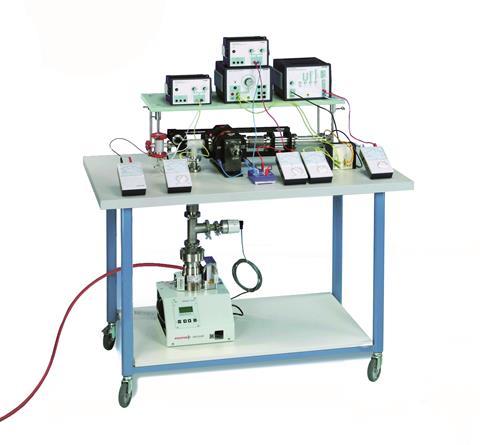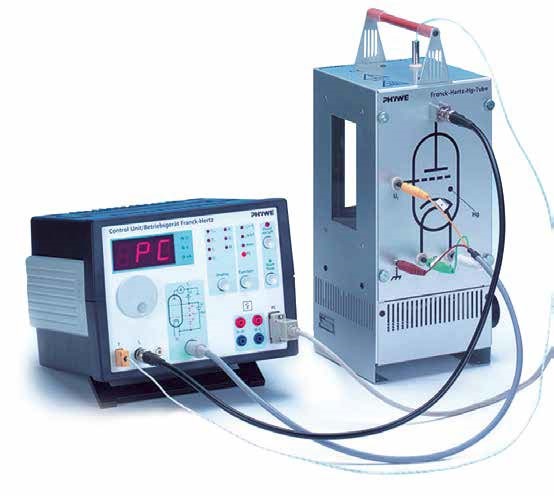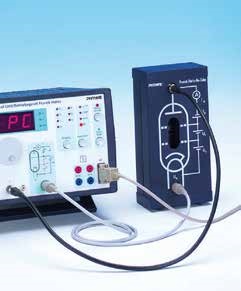Phywe’s Stern-Gerlach & Franck-Hertz Experiments
Retrace the first proof of quantisation of the angular momentum of an atom
PHYWE Stern-Gerlach

A beam of potassium atoms generated in a hot furnace travels along a specific path in a magnetic two-wire field. Because of the magnetic moment of the potassium atoms, the non-homogeneity of the field applies a force at right angles to the direction of their motion. The potassium atoms are thereby deflected from their path. By measuring the density of the beam of particles in a plane of detection lying behind the magnetic field, it is possible to draw conclusions as to the magnitude and direction of the magnetic moment of the potassium atoms.
What can you learn:
- Magnetic moment
- Bohr magneton
- Directional quantisation
- g-factor
- Electron spin
- Atomic beam
- Maxwellian velocity distribution
- Two-wire field

Impact of an electron upon an atom
Franck-Hertz with an Hg-tube

Electrons are accelerated in a tube filled with mercury vapour. The excitation energy of mercury is determined from the distance between the equidistant minima of the electron current in a variable opposing electric field. This experiment is also available with neon tube.
What can you learn:
- Energy quantum
- Electron collision
- Excitation energy


 Our friendly and knowledgeable service and support team is based in Sydney, Australia. They are on hand and happy to help with your sales and support queries.
Our friendly and knowledgeable service and support team is based in Sydney, Australia. They are on hand and happy to help with your sales and support queries. We’ve carefully selected the highest quality equipment and systems from around the globe to bring world-class technology to Australian and New Zealand educational facilities.
We’ve carefully selected the highest quality equipment and systems from around the globe to bring world-class technology to Australian and New Zealand educational facilities. Our parent company,
Our parent company, 


Leave a Reply
Want to join the discussion?Feel free to contribute!